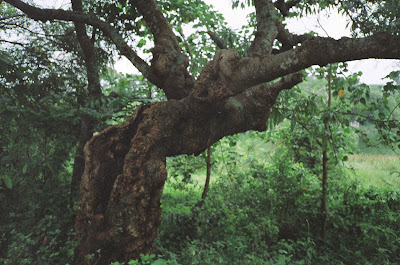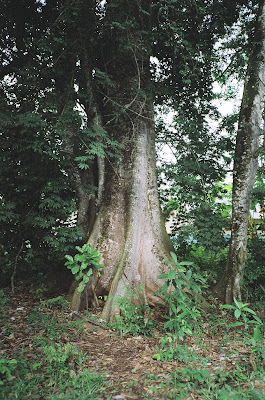Our guide explained how most animals timed their mating for the calves to be dropped when the grass was lush and they would have 3 months to grow and gain strength for the migration north. This all started when a Blacksmith Plover alighted momentarily on the back of a female and someone said, "That was a quickie." From that we went to lions mating, Impala bucks fighting for dominion over the harem, giraffe "packages", reading baboon butts for signs of estrus:
We noticed some goats in the Masai herds sporting red and yellow plastic "aprons". Asked about this, our guide explained that the Masai too only wanted their goats to mate at certain times when the grass was plentiful. We dubbed these "goat condoms." Like what this elephant is wearing. (Borrowed picture)
But some guys are ready any time.
Five-legged zebras, blue-balled monkeys
elicited ribald laughter in which our guide joined, although perhaps a bit embarrassed. "You naughty ladies."
Tanzania
Wednesday, May 16, 2012
Monday, May 14, 2012
Tanzanian trees and plants
Some of the very interesting and beautiful trees and plants of Tanzania and Zanzibar
Lillies
Heliconia rostrata
Flower of the Banana tree
 |
Poinsettia bush |
 |
Senna tree ( this is a common laxative) |
 |
Quinine tree (used against malaria) |
 |
Flower of the aloe vera plant with a Superb Starling |
A purple hibiscus
 |
A Beautiful Sunbird on a flower (?) |
 |
Baobab tree Cycas thourasii (Madagascar) |
 |
Jack Fruit (or breadfruit) |
 |
Kapok tree |
In the Crater
The Ngorongoro Crater
Animals can move in and out of the Crater using the same park roads we do. Some of our findings that day:
Water Buffalo--some of the most dangerous animals in Africa
And some of the most beautiful
And some of the most disgusting
Hyenas like to wallow in mud
Animals can move in and out of the Crater using the same park roads we do. Some of our findings that day:
Lions digesting last night's kill,
Water Buffalo--some of the most dangerous animals in Africa
And some of the most beautiful
"Tommies" at ease
Zebras
And some of the most disgusting
Tanzanian Birds
Gorgeous bird life! With the help of our knowledgeable guide, we identified 78 birds. Some are represented here.
The White-fronted Bee-eater
The White-fronted Bee-eater
Lilac-breasted Roller
Weaver bird nests (sloppy variety)
Taveta Golden Weaver (neat variety)
Ostrich (male)
Crowned Plover
Blacksmith Plover
Kori Bustard (not displaying)
Marabou storks
Yellow-billed storks roosting
White-headed Buffalo Weaver
Grey Crowned Crane
Sand Grouse
Secretary Bird
Friday, May 11, 2012
Zanzibar
Zanzibar is an island 24 miles off the coast of Tanzania. It was an early Arab slave depot and also known for its spices. It is a little steamy even in the "cool" season when we were there. The buildings are a little dilapidated but it recently was declared a UNESCO World Heritage Site which should bring in some much-needed funding for renovation.
Zanzibar is 90% Muslim.
There are many ornately-carved doors which not only show the wealth of the inhabitants but are studded for protection (supposedly against wild animals, but who knows).
We stayed at a hotel at the Mbweni Ruins, which was the former home of a Sultan with an exotic garden.
The Zanzibar contingent
Zanzibar is 90% Muslim.
There are many ornately-carved doors which not only show the wealth of the inhabitants but are studded for protection (supposedly against wild animals, but who knows).
We stayed at a hotel at the Mbweni Ruins, which was the former home of a Sultan with an exotic garden.
 |
Cycas thourasii (Madagascar) |
The Zanzibar contingent
Subscribe to:
Comments (Atom)










































